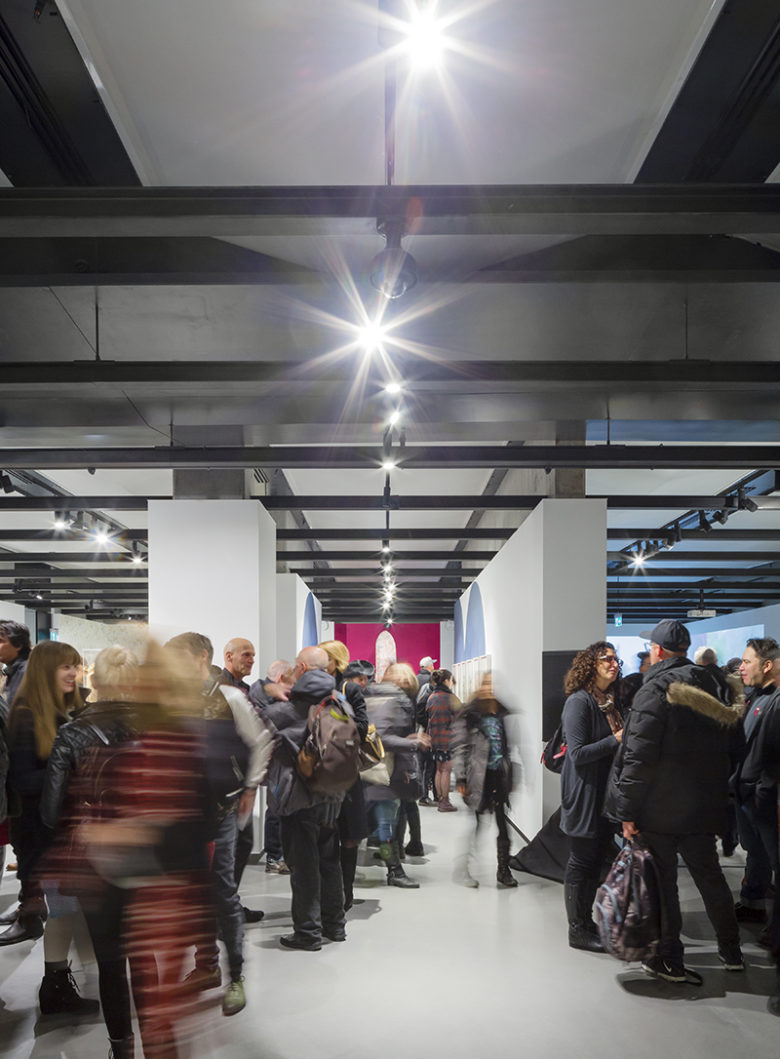Location: Eastern Canada
Canadian Food Inspection Agency
Electrical Upgrade
HH Angus was engaged to upgrade the electrical distribution at the Canadian Food Inspection Agency, a regulatory body inspecting food, animals, and plants to protect the health and well-being of Canada’s people, environment and economy.
Our initial task on this project was to investigate existing major electrical systems and provide a concept design to replace and upgrade the existing equipment, which had reached end-of-life. Prior to implementation, we developed detailed phasing sequences to minimize the impact of power outages on the client’s operations.
Key design elements included replacing equipment with up-to-date technology, increasing capacity to ensure long service life, and meeting anticipated building usage. We also added power factor correction to reduce electricity costs for anticipated future rate structures. The new design provided flexibility for power distribution and technology. The client’s expectation was the replacement of main electrical equipment should carry the building reliably for at least 25 years.
HH Angus’ scope of work included design engineering services for replacement of 2 main 13.8kV underground service feeds – two 2000kVA dry transformers, two 600V switchboards feeding the building services, 600v switchboards that supply another 15 various 112.5KVA/150 KVA/225KVA-rated 600/208-120 dry transformers, 208/120V CDP distribution panels, MV/LV power cables, power factor capacitors and some transfer switches. In addition, associated equipment auxiliaries were replaced or upgraded. We also managed coordination, testing and commissioning of the replacement equipment.
SERVICES
Prime Consultant | Joint Venture | Electrical Engineering
PROJECT FEATURES
Status: Completed 2017
KEY SCOPE ELEMENTS
Review and upgrade of existing end-of-life equipment | Developed detailed phasing sequence to minimize the impact of power outages | Power correction factor added to reduce future electrical costs | Replacement of two 13.8 service feeds & transformation
Ontario College of Art & Design University
Professional Gallery
The OCAD Gallery is the flagship professional gallery for the Ontario College of Art and Design, Canada’s largest and oldest educational institution for art and design. It serves as an experimental curatorial platform for art, design and new media.
HH Angus was tasked with the mechanical, electrical and lighting design for this 755 m2/8,200 ft2 facility. It includes gallery space, a media lounge, permanent art collection and storage, administration support services and shipping and receiving areas.
This project provided interesting design challenges to protect the art from potential water leakage from the tenants on the floor above. The ceiling is covered in a white waterproof membrane, which made recessed luminaires impractical.
The ceiling beams have a dual purpose – to support the track luminaires and to create an artistic industrial feel for the space. The track is two circuit to allow for maximum flexibility. LED track heads are 3500K with a CRI above 93 to enhance the colour of artwork in the exhibits. The track heads were chosen to allow for multiple and varied beams spreads, to enhance each exhibit and to provide flexibility by accommodating different lensing and media. Suspended linear LED luminaires were used in non-gallery spaces. Various power and data systems were used throughout the premises.
The heating and ventilation systems were designed to meet the mechanical requirements for a Class ‘A’ Art Gallery. The mechanical requirements for the Gallery consist of controlled humidification levels and temperature range. To achieve the requirements, a separate dedicated standalone mechanical air conditioning/humidification system was designed for the space. An indoor dry cooler and a series of heat pumps are located throughout the facility. Each heat pump has an associated electric humidifier and associated condensate pumps.
SERVICES
Mechanical Engineering | Electrical Engineering | Lighting Design
PROJECT FEATURES
Size: 8,200 ft2 | Status: Completed 2017
LOCATION
Toronto, Ontario
KEY SCOPE ELEMENTS
Water leakage mitigation | LED luminaires | Power and data systems | Controlled humidification | Heating and ventilation systems for Class A Art Gallery standard

Meeting Project Goals
The OCAD project was delivered under budget and met LEED certification requirements.
Custom Lighting Requirements
A central dimmable lighting control system was incorporated. The lighting control was divided into multiple zones to satisfy the custom needs of the Gallery.

Southlake Regional Health Centre
Redevelopment
Southlake Regional Health Centre serves a catchment area of over one million people. It has more than 400 patient beds, and receives 113,000+ visits annually to the ER Department, and 530,000 out-patient visits.
The Southlake Redevelopment project included a 190,000 ft2 addition in the form of a six-storey tower plus mechanical penthouse, as well as extensive renovations to the existing facility. The tower structure has a mix of occupancies, with critical care spaces located on several floors.
Providing department-specific air handling units was not possible within the constraints of the building design. The solution to the air handling design was to provide four large 100% outdoor air units with high efficiency total enthalpy heat wheels that serve all floors. The result was an arrangement that allows for both initial and future flexibility.
Construction of the tower structure preceded the renovations, which were phased to permit relocation of departments to the new wing. Careful planning of the mechanical and electrical systems was required to integrate the new addition into the existing facility and to implement renovation phasing. HH Angus worked diligently on this with the Architect, Hospital and Contractor to ensure each phase of construction was fully serviced with minimal disruption to the User Groups.
HH Angus’ Vertical Transportation Group was responsible for the design of four elevators within the expansion of the Central Wing.
SERVICES
Mechanical Engineering | Electrical Engineering
PROJECT FEATURES
Size: 190,000 ft2 | Status: Completed 2007
LOCATION
Newmarket, Ontario
KEY SCOPE ELEMENTS
Designed 4 large 100% outdoor air units with high-efficiency total enthalpy heat wheels | Integrated new and old mechanical and electrical systems | 4 elevators designed for the Central wing

Trusted relationship
HH Angus has continued to work with Southlake Regional Health Centre on ongoing upgrades and infrastructure renewal.
Public Works & Government Services Canada
Tunney’s Pasture
HH Angus was engaged as Prime Consultant on a chiller plant installation for this public building in Ottawa. The project installation serviced nineteen buildings with a total floor space of ~3,170,000 ft2 and was comprised of two chillers @3500 tons.
Tunney’s Pasture is a 49-hectare (121 acre) mixed-use campus in Ottawa, including government services, commercial offices and residential buildings. Its existing steam-driven chillers were at end of life and operating with R22 refrigerant, the import and production of which is banned as of January 2020. Also, the use of river water for free cooling needed improvement and the river water pumping system was not operating efficiently.
HH Angus, in joint venture with Goodkey Weedmark, was retained to undertake conceptual studies to evaluate changing the chillers from steam power to electrical power. We also made recommendations for improving the free cooling aspects of river water and making more effective use of the river water pumping system.
HH Angus provided conceptual evaluation of replacing the chillers, in terms of efficiency, physical location and necessary steps required to change from steam to electrical power. Once the chiller concept was resolved, we evaluated optimization of the river water pumps to undertake the condenser water cooling and considered how to efficiently use the free cooling available from the river in low load conditions.
Optimizing free cooling and condenser water, using river water instead of cooling towers, resulted in energy efficiency and reduced carbon footprint for this installation. We also identified benefits to the client through improvement in chiller efficiency using the latest technology, and the elimination of boiler operation during the summer months.
SERVICES
Prime Consultant | Mechanical Engineering | Electrical Engineering
PROJECT FEATURES
Status: Completed: 2017
LOCATION
Ottawa, Ontario
KEY SCOPE ELEMENTS
Evaluation to optimize river water pumps to undertake condenser water cooling & efficient use of free cooling from the river in low load conditions | Consulted on technology that would eliminate boiler operations during summer months
Enwave Energy Corporation
Pearl Street Cogeneration Plant
HH Angus provided design and engineering services for Enwave’s CHPSOP 2.0 contract to install a 2 x 2 MW Cogen project at the Pearl Street plant.
The Pearl Street steam plant is one of two major boiler plants that service Enwave’s downtown Toronto heating system, and usable plant space there was a significant constraint. The new cogeneration was to be installed in limited space in the basement.
We first undertook a feasibility study to determine whether the existing basement would accommodate a 4 MW single engine or 2 x 2 MW engines. Based on the study results, Enwave selected the 2 x 2MW option.
The initial phase of the detailed design was to determine which cogeneration engines would be options, given the space constraints. It was established that only one supplier’s equipment would fit. The next phase involved pre-tenders, including engine generator sets, heat recovery steam generator, selective catalytic reduction, and switch gear.
Plant design used 3D software to ensure all equipment could fit without coordination clashes. The combustion and ventilation required were a major challenge, entailing architectural changes to the building to meet code, and a new area way on the outside of the building, to allow for combustion air and ventilation air. The engine generator had to be disassembled at the distributor and reassembled on site. The focus then moved on to locating a suitable routing for the breeching and silencers off the engine exhausts, which had to travel from the basement to the roof.
In a CHPSOP 2 contract, the client is exporting power into local LDC (Toronto Hydro). HH Angus designed protection, monitoring, and control requirements per Toronto Hydro’s embedded generation technical interconnection requirements.
HH Angus coordinated with Toronto Hydro, on behalf of the client, for: revenue metering CTs/PTs to install in the switchgear hydro compartment; metering cabinet; and commissioning of the synchronization test, protection, and SCADA points. We also issued a signed, embedded generation commissioning report.
SERVICES
Mechanical Engineering | Electrical Engineering
PROJECT FEATURES
Status: Completed 2017
LOCATION
Toronto, Ontario
KEY SCOPE ELEMENTS
Use of 3D plant design to ensure all equipment could be accommodated | Design restricted by space constraints | Design, protection, monitoring & control requirements per Toronto Hydro's embedded generation technical interconnection requirements
